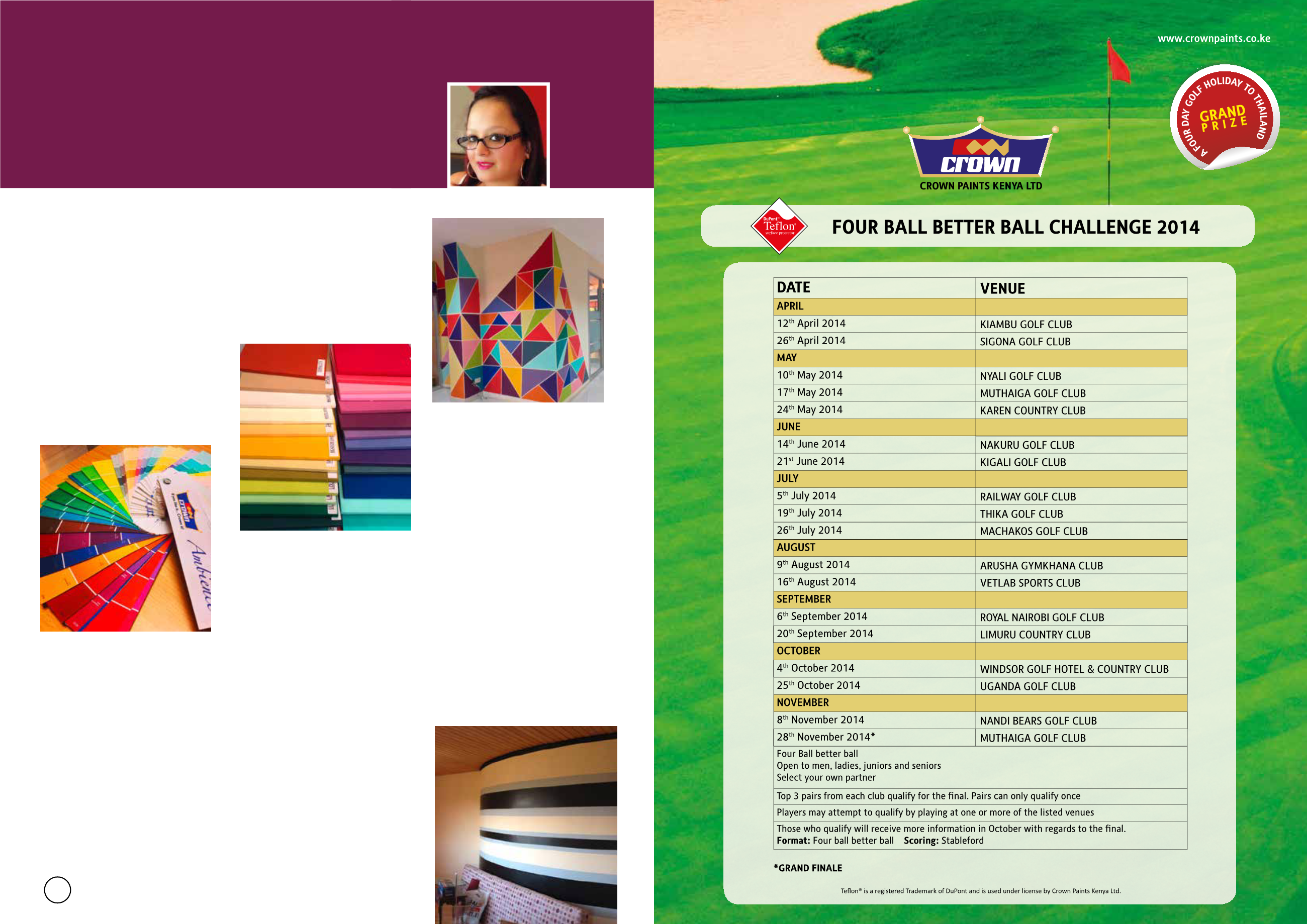
August 2014
14
Know your finish:
Different paint
finishes have different advantages. Silk
emulsion paint offers greater durability and
is very easy to clean. If your wall is less than
perfect, however, silk paint can enhance
the imperfections. Flat paint will do a much
better job of hiding imperfections, but it’s
much easier to damage than silk. Matt is a
great middle-of-the-road option. Therefore,
before you begin to paint, consider wall
imperfections.
Don’t let fear of colour turn your
room white:
Colours can add depth and
texture to your room. Using the right colours
can turn an otherwise dull room into a
beautiful, warm space. If you get a colour
you don’t like, just paint over it!
things you need to know
about interior painting
By Interior Designer Shrinal Patel
Small samples prevent big
surprises:
It’s very difficult to tell what
a colour is going to look like on your wall
using a small paint swatch. Investing in a
“test gallon” can get expensive, especially
if you can’t make up your mind. Many paint
manufacturers are now offering sample
cans of their colours. They cost only a few
hundred shillings and will prevent you from
wasting money on a colour that just isn’t
right. Companies also provide samples on
boards now so you don’t have to use your
walls as a guinea pig for experimenting to
see if the colour does justice to your space
or not; this saves you time and money as you
will find the perfect colour and your wall will
not have to be dressed with an undercoat
again and again after sampling.
Square footage is only half of the
equation:
When you buy your paint, you
have to know the square footage of your
room. However, there are other factors that
contribute to the amount of paint you will
need. Always consider the surface you are
painting, whether you are priming walls and
the number of coats you are going to need.
All of these things will affect the amount of
paint you need to purchase.
Get ready to spend some time
preparing:
About 80 percent of your
time should be spent doing prep work.
Contrary to popular belief, paint will not hide
all imperfections. Take the proper steps
to make your walls as flat as possible and
make sure you clean them before you start
to paint. Any dust or debris left on the wall
could cause your new paint to peel.
There is a reason it is called
primer:
Primer is essential in any good-
quality paint job. It seals the surface of your
walls and provides a great base for the paint
to grab. If you have spackled your walls,
priming is necessary to prevent flashing.
Unprimed spackle holds silk better than
drywall, causing a “shiny” spot on your wall.
Don’t cut in a line:
Always do brushwork
in the corners before you begin rolling.
Rolling after brushwork will flatten any
brushstrokes left in the wall, giving you an
evenly painted surface.
Rollers can put more than paint
on the wall:
Use simple masking tape to
remove any extra fibres before you paint.
If you don’t, those fibres will become a
permanent fixture on your wall.
Avoid overextending yourself:
Extension poles are a great way to cut
time and effort out of a paint job. They will
prevent you from climbing up and down a
ladder and give you more leverage when
you are painting a wall that is right in front
of you. The benefit of an extension pole far
outweighs the price.
If you “box” your paint, you will
never fight blotches:
It may be
connected to a computer and look high-
tech, but the colour mixer can create slight
variations from can to can. The last thing you
want is to have two shades of a colour on the
same wall. This can be remedied by mixing
all of the paint cans together before you start
painting. Boxing your paint ensures you will
have consistent colour throughout the room.
10
1
2
3
4
5
6
7
8
9
10


